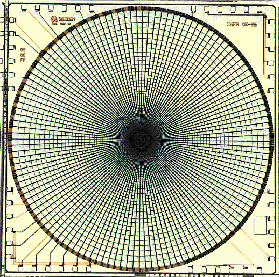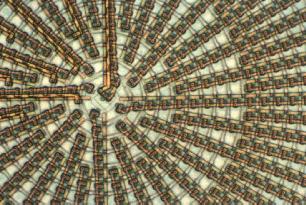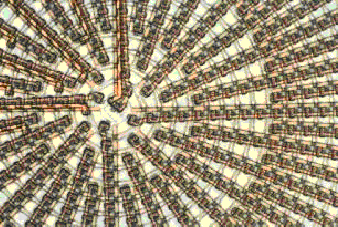

The foveated CMOS chip designed by by the IMEC and IBIDEM consortium [Ferrari et al. 95b, Ferrari et al. 95a, Pardo 94], and dubbed ``FUGA'', is similar to the CCD fovea described in Section 2.11 [van der Spiegel et al. 89]. The rectangularly spaced foveated region in the CCD retina has been replaced by reconfiguring the spatial placement of the photodetectors. As a result of this redesign, the discontinuity between fovea and the peripheral region has been removed. In the CCD retina a blind sliced region (for routing the clock and control signals) exists. In the FUGA18 retina the need to this region has been removed by routing the signals through radial channels. Figure 2.15 shows the photograph of the central region of the foveated retina. Several versions of the FUGA chip with different sizes have been designed and manufactured by IMEC.

Figure 2.15: Central region of FUGA18 foveated CMOS retina.
To obtain a relevant PS document provided by Fernando Pardo (ftp from Adelaide 200K)